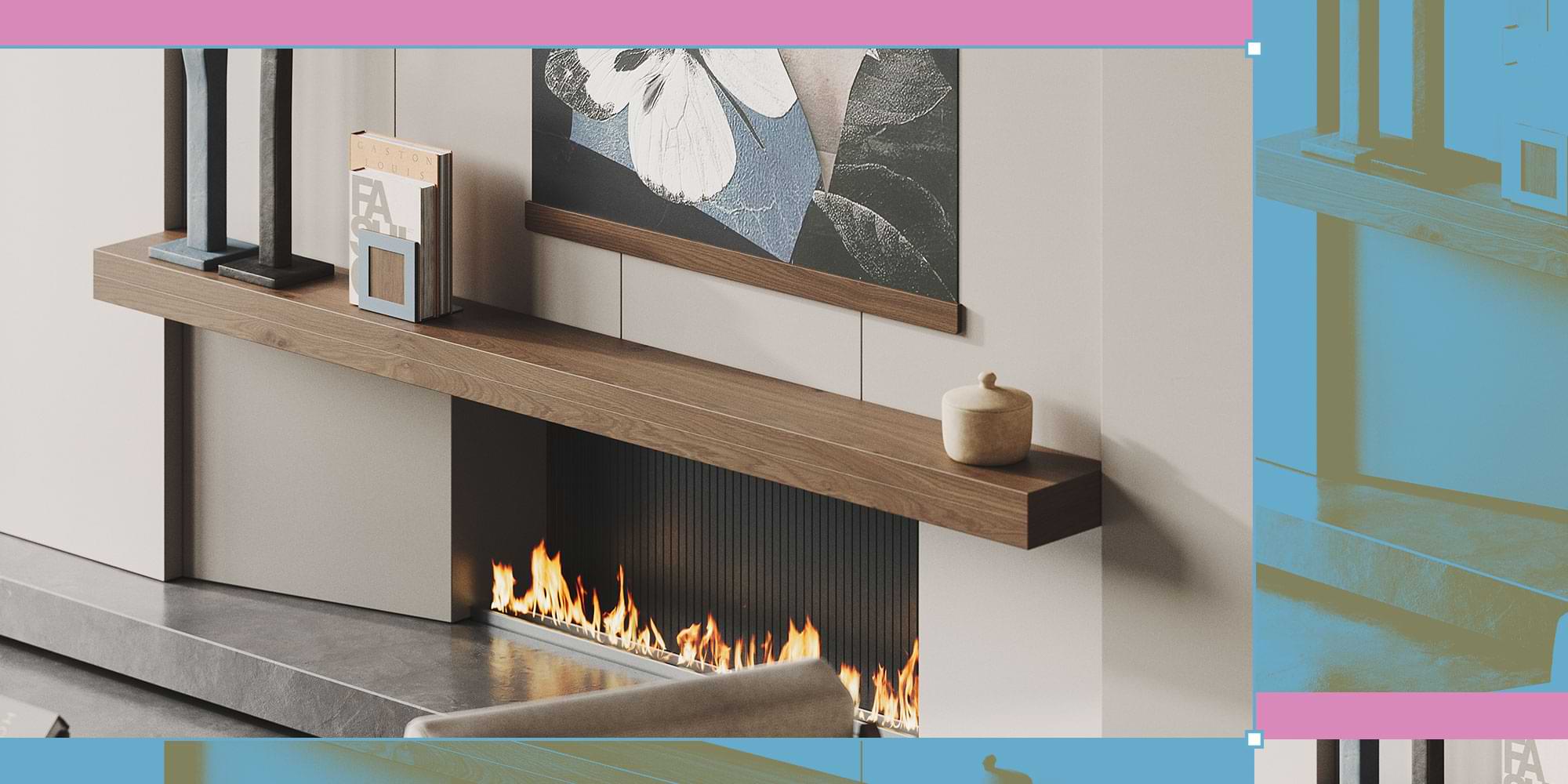Ah, the fireplace; a gathering and focal point of homes the world over. Fireplaces, over the years, have changed just as much as our homes have. In today’s blog post, we’ll look at the history of the floating fireplace mantel and how you can use one to create a warm, inviting atmosphere in your home.
Let’s dive right in and check out these chonky shelves, dudes.

Choose a stunning fireplace mantel to add style, warmth, and a cozy atmosphere to your home.
What Is a Floating Fireplace Mantel?
You might already be familiar with the term mantel; a mantel is simply the top, horizontal surface of the fireplace surrounding it, usually made of brick, stone, or cement. When we talk about a floating fireplace mantel, we’re talking about one that is free-standing. Usually, these hang above fireplace inserts – fireplaces set into the wall and flush with the wall.
A floating fireplace mantel is a great way to increase the utility of the space above your fireplace insert, where there would be no storage or surface to put things on. Here at Shelfology, we know how nice it is to put pictures of family and pets up there for people to see, so we carry a whole line of floating mantels!

When Did Floating Mantels Become Popular?
Fireplaces weren’t really popular until the Victorian Era (the 1830s to 1900), and even then, they were only for the very wealthy. Before this, the main source of heating was a fire pit – far from the soothing, comforting fireplaces we have today.
At the beginning of the 1900s, even the common people had begun using fireplaces and wood cooking stoves for heating. However, they were merely functional and were rarely aesthetically pleasing. As the 1900s progressed, fireplaces became less and less common – thanks to the invention of electrical heat. Gas and oil boilers made fireplaces less of a necessity and more of a design element.
It’s at this point that we start to see decorative mantels and elaborate stonework. As fireplaces became less forward and more inlaid, floating mantels became more popular.

How Do Floating Mantels Work?
It might seem odd to see a thick, likely heavy piece of wood hanging precariously above a fireplace – we get it. That’s the look we’re going for! Floating mantels, like floating shelves, are designed to be anchored securely to the wall in a way that makes them incredibly sturdy.
Much like our Aksel Wood Floating Shelves, our Glenn Floating Fireplace Mantels use heavy-duty all-American steel brackets and rods to hold a beautiful solid hardwood slab in place. These brackets drill directly into studs or masonry for a Chuck-Norris-esque hold that can usually hold up to 50 pounds per anchor point into a stud or masonry.





Share:
Garage Gainz: Shelfology Studly Kits Will Flex Your Organization Muscles
How to Arrange Items on Shelves Like a Designer